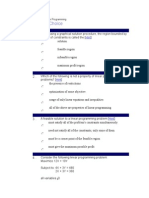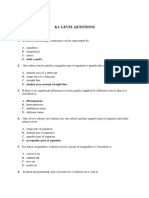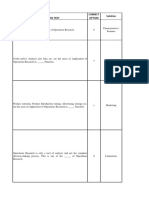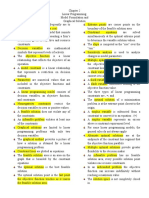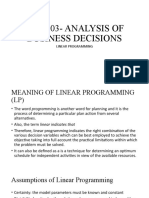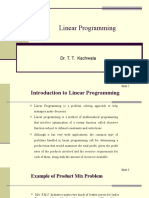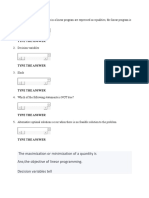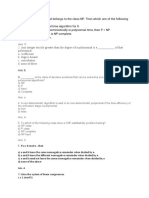0% found this document useful (0 votes)
51 views3 pagesAdvanced Algorithms Quiz2
This document contains 10 multiple choice questions about linear programming concepts. It tests understanding of identifying the objective and constraints, feasibility of points, slack variables, simplex method basics like non-basic variables and non-negativity constraints, approximation algorithms, and formulating an objective function to maximize profit based on production details.
Uploaded by
mathuCopyright
© © All Rights Reserved
We take content rights seriously. If you suspect this is your content, claim it here.
Available Formats
Download as DOCX, PDF, TXT or read online on Scribd
0% found this document useful (0 votes)
51 views3 pagesAdvanced Algorithms Quiz2
This document contains 10 multiple choice questions about linear programming concepts. It tests understanding of identifying the objective and constraints, feasibility of points, slack variables, simplex method basics like non-basic variables and non-negativity constraints, approximation algorithms, and formulating an objective function to maximize profit based on production details.
Uploaded by
mathuCopyright
© © All Rights Reserved
We take content rights seriously. If you suspect this is your content, claim it here.
Available Formats
Download as DOCX, PDF, TXT or read online on Scribd
/ 3



